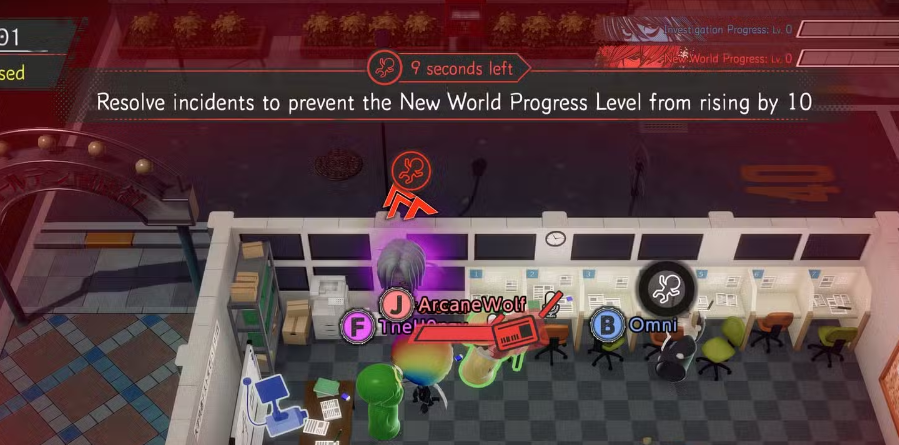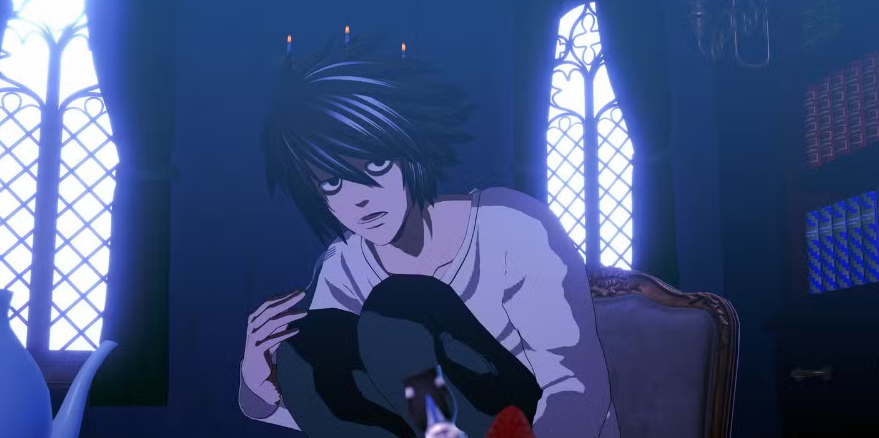Death Note: Killer Within Review- Smart Yet Flawed Social Deduction Game
Key Takeaways:
- Death Note: Killer Within redefines anime gaming by blending social deduction with the iconic mind games of Death Note in an Among Us-inspired format.
- Despite creative use of Death Note’s characters and premise, the game suffers from a steep learning curve, minimal onboarding, and a chaotic UI that may frustrate new players.
- While it offers engaging gameplay for fans of complex multiplayer experiences, technical challenges and a demanding voice chat environment may limit its appeal.

Death Note: Killer Within, released by Bandai Namco and developed by Grounding, Inc., offers an unexpected twist on the typical anime-based game. Known for gripping storylines and complex characters, Death Note is a franchise beloved by millions. Yet, Killer Within diverges from the usual combat-heavy anime games to deliver a social deduction game that builds on the popularity of Among Us. This multiplayer game challenges players with intense cat-and-mouse mind games, requiring both skill and patience to navigate its unique dynamics.
Unlike most Death Note games that highlight battles or one-on-one confrontations, Killer Within invites players into a simulation of strategy and deception. Here, players assume the roles of Death Note’s protagonist Light Yagami, his nemesis L, and other characters in a high-stakes game. The game’s success relies on teamwork, sleuthing, and the thrill of outwitting your opponents all set within a confined digital arena.

How Gameplay Mirrors Death Note’s Storyline
Multiplayer Mechanics with Familiar Characters
When you dive into Death Note: Killer Within, you’re immediately drawn into the tension and intrigue that defines the anime. In each match, one player takes on the role of Kira (the game’s antagonist with a lethal notebook) and can select a follower to aid in the deception. The remaining players become L or Investigators, working together to uncover who Kira and their accomplice are before falling victim to the Death Note’s wrath.

The gameplay is divided into rounds, each opening with players performing their assigned tasks while keeping a close watch for suspicious activity. At the end of each round, players gather to discuss, accuse, and strategize. Just like the original anime, the meetings become heated as players try to prove their innocence or pin the blame on others. The Kira character has additional abilities that help them deceive or set traps, while the L role allows for surveillance and assigning tasks to gather more evidence.
Complex Roles and Objectives
Each character role brings specific challenges and abilities that add layers to the gameplay. For instance, Kira and the follower’s main goal is to eliminate or mislead investigators without getting caught. On the flip side, L and the investigators focus on observing, deducing, and discussing clues to identify the killers. Win conditions vary, with Investigators aiming to expose Kira and Kira needing to eliminate enough players or earn enough points to secure a win.

While these elements mirror Death Note’s central theme of manipulation and strategy, the game’s learning curve can be steep. Players unfamiliar with the lore or new to social deduction games may struggle with its complex mechanics and chaotic gameplay, particularly since there’s no story mode or in-depth character backstory.
Pros and Cons: Innovation Meets Complexity
Pros
- Unique Take on Anime Gaming: Unlike typical anime games that lean heavily on combat mechanics, Death Note: Killer Within takes a bold approach by focusing on deduction and strategy.
- Complex Gameplay Mechanics: For fans of social deduction games, Killer Within offers deeper gameplay with more nuanced strategies than most genre counterparts.
- Lore Elements and Character Features: The game stays true to Death Note’s thematic elements, incorporating Light, L, and even Misa as unlockable skins and characters with traits reflective of the anime.
Cons
- High Complexity and Poor Onboarding: New players may find the game’s instructions overwhelming and the UI cluttered, leading to a difficult and disjointed learning experience.
- Heavy Reliance on Voice Chat: Though technically optional, voice chat is almost essential to keep up with the fast-paced gameplay, adding an additional barrier for those who prefer not to use it.
- Limited Game Modes and Customization Options: With only one map and few game modes, Death Note: Killer Within feels restrictive, especially given its reliance on a large player count (up to ten) to function smoothly.
Technical and Accessibility Challenges
Steep Learning Curve and Chaotic User Interface

The UI presents one of the biggest obstacles, with its cluttered and, at times, confusing design. The tutorial stage does little to alleviate the steep learning curve, as it drops too much information at once, making it easy for players to become overwhelmed. Tasks can be hard to manage, especially for L’s role, which comes with multiple surveillance abilities and task assignments. While these layers add depth, they can also overwhelm players who are trying to learn the ropes.
Voice Chat Dependency
The chaotic nature of Death Note: Killer Within requires ten players to communicate effectively, ideally through voice chat, as the game’s text-based options are too limited for efficient gameplay. The game’s fast pace and limited time for decision-making often mean that players without voice chat can struggle to contribute effectively. This heavy reliance on audio communication can create accessibility issues for those who prefer text-based communication or find voice chat daunting.

Server Instability and Match Interruptions
Server stability remains an issue, as players can be disconnected mid-game or encounter technical lags that cause the match to end abruptly. When a player drops out, the match resets, returning everyone to the lobby and leaving the game without a winner or completion. These disruptions can deter many players from fully enjoying or even completing a session, especially when these interruptions become frequent.
Final Verdict
Death Note: Killer Within brings an unexpected twist to anime-based games, offering a unique multiplayer experience that stands out among typical franchise adaptations. While it creatively integrates social deduction elements inspired by Among Us, its steep learning curve, lack of onboarding, and technical challenges hinder its full potential. The game appeals most to players who appreciate complex strategy games and can handle the demands of real-time voice chat in a high-energy environment.
For fans of Death Note craving a multiplayer experience that captures the suspense and intellect of the original series, Death Note: Killer Within has flashes of brilliance that could grow with future updates, more maps, and a smoother user experience. However, if you prefer a simpler interface, less reliance on voice chat, or a stronger story-based single-player experience, this game may leave you wanting more.
FAQ
Is Death Note: Killer Within suitable for players new to social deduction games? The game is challenging and may overwhelm players who are new to social deduction games or unfamiliar with Death Note. It’s best suited for those comfortable with real-time communication and complex gameplay mechanics.
Does the game include single-player or story modes? No, Death Note: Killer Within is strictly a multiplayer game, focusing entirely on social deduction. There is no single-player or story-driven campaign, which may disappoint fans hoping for deeper character exploration.
How essential is voice chat to the gameplay? While technically optional, voice chat is highly recommended due to the game’s fast pace and complex dynamics. Relying solely on text-based prompts may hinder your ability to contribute effectively during the discussion phases.
Are there plans for new content or updates? Although no specific updates have been confirmed, there is room for improvement, such as additional maps and better server stability, which fans hope to see in future patches.
What platforms is Death Note: Killer Within available on? The game is currently available on PC and PlayStation 4 and 5.